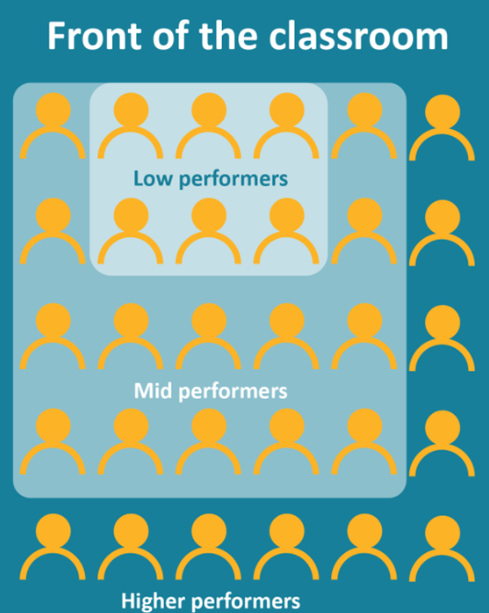Back to Course
Teach Reading Mastery Signature Edition: Year 2 and 3
0% Complete
0/0 Steps
-
Module Introduction5 Topics
-
Overview16 Topics|2 Tests
-
Cover
-
Lesson Objective
-
Opening the Lesson
-
Professional Learning Standards, Techniques, and Practices
-
RMSE 2: Who It Is For
-
RMSE 2 Materials
-
RMSE 3: Who It Is For
-
RMSE 3 Materials
-
Check Your Understanding
-
RMSE 2–3 Overview
-
RMSE 2–3 Time Requirements
-
RMSE 2–3 Teacher’s Guides
-
Video: Interview-Reading Mastery 2-3 Overview
-
Test Your Understanding
-
Review
-
Lesson Completed!
-
Cover
-
Setting Up for Success21 Topics|2 Tests
-
Cover
-
Lesson Objective
-
Opening the Lesson
-
Professional Learning Standards, Techniques, and Practices
-
Placement Tests Overview
-
Placement Test Guidelines
-
RMSE 2–3 Placement Test Specifics
-
Homogeneous Grouping Scenario
-
Check Your Understanding
-
Video: RMSE 2 Placement Test
-
Grouping and Seating
-
Star Rules
-
Pacing
-
Video: Pacing of Instruction
-
Transitions
-
Script Features
-
Auditory Signal
-
Video: Auditory Signal
-
Test Your Understanding
-
Review
-
Lesson Completed!
-
Cover
-
Getting into the Lesson17 Topics|2 Tests
-
Cover
-
Lesson Objective
-
Opening the Lesson
-
Professional Learning Standards, Techniques, and Practices
-
Lesson Types
-
Lesson Events Explained
-
Lessons Events Explained Continued
-
Vocabulary Emphasis
-
Model Vocabulary Sentences
-
Check Your Understanding
-
Teaching Vocabulary Sentences
-
Video: Teaching Vocabulary
-
Vocabulary Sentence Corrections
-
Droning and Corrections
-
Test Your Understanding
-
Review
-
Lesson Completed!
-
Cover
-
Word Attack Formats and Corrections18 Topics|2 Tests
-
Cover
-
Lesson Objective
-
Opening the Lesson
-
Professional Learning Standards, Techniques, and Practices
-
Word-Attack Exercises
-
Teaching Word Attack
-
Video: Teaching Word Attack
-
Types of Errors
-
Correcting Response Errors
-
Correcting General Errors
-
Check Your Understanding
-
Sound Combinations
-
Sound Combinations Correction Procedure
-
Individual Turns
-
Video: Teacher Using Individual Turns
-
Test Your Understanding
-
Review
-
Lesson Completed!
-
Cover
-
Background Passages and Main Story Reading19 Topics|3 Tests
-
Cover
-
Lesson Objective
-
Opening the Lesson
-
Professional Learning Standards, Techniques, and Practices
-
Types of Regular Reading Selections
-
Story Background Passages
-
Teaching Story Background Passages
-
Main Story Reading in RMSE 2
-
Main Story Reading in RMSE 3
-
Check Your Understanding
-
Decoding Error Limits
-
Types of Errors During Story Reading and Background Passages
-
Background Passage and Main Story Corrections
-
Video: Story Reading Correction Procedures
-
Background Passage and Main Story Teaching Tips
-
Check Your Understanding
-
Test Your Understanding
-
Review
-
Lesson Completed!
-
Cover
-
Comprehension Activities18 Topics|2 Tests
-
Cover
-
Lesson Objective
-
Opening the lesson
-
Professional Learning Standards, Techniques, and Practices
-
Comprehension Skills in RMSE 2–3
-
Sequence of Comprehension Development
-
General Comprehension Skills
-
Main Story Comprehension
-
Comprehension Teaching Tips
-
Check Your Understanding
-
Comprehension Question Corrections
-
Correcting Comprehension Questions (continued)
-
Correcting Comprehension Errors: Scenario
-
Video: Comprehension Corrections
-
Script Success
-
Test Your Understanding
-
Review
-
Lesson Completed!
-
Cover
-
Independent work, Paired Practice and Fact Games21 Topics|2 Tests
-
Cover
-
Lesson Objective
-
Opening the Lesson
-
Professional Learning Standards, Techniques, and Practices
-
Independent Work General Information
-
Early Preparation
-
Active Monitoring
-
Active Monitoring Procedure
-
Video: Active Monitoring
-
Work Check General Information
-
Conducting Group Work Check
-
Check Your Understanding
-
Video: Group Work Check Procedures
-
Paired Practice
-
Fact Games
-
Fact Game Student and Teacher Procedures
-
Activity Lessons
-
Special Projects Lessons
-
Test Your Understanding
-
Review
-
Lesson Completed!
-
Cover
-
Motivating Students17 Topics|2 Tests
-
Cover
-
Lesson Objective
-
Opening the Lesson
-
Professional Learning Standards, Techniques, and Practices
-
Basis of Student Motivation
-
The Teacher’s Role in Motivation
-
STAR Rules
-
Teacher–Student Game
-
Teacher–Student Game Points
-
Video: Examples of the Teacher/Student Game
-
Check Your Understanding
-
Video: Positive Praise Throughout the Lesson
-
Specific Praise
-
Positive Reinforcement Scenario
-
Test Your Understanding
-
Review
-
Lesson Completed
-
Cover
-
Mastery Tests and Checkouts20 Topics|2 Tests
-
Cover
-
Lesson Objective
-
Opening the Lesson
-
Professional Learning Standards, Techniques, and Practices
-
Measurable Student Improvement
-
Fluency Checkouts
-
Conducting Fluency Checkouts
-
Firming Students on Fluency Checkouts
-
Checkout Thermometer Charts
-
Mastery Tests
-
Administering and Scoring Mastery Tests
-
Check Your Understanding
-
Mastery Test Criterion
-
Test Remedies
-
Video: When a Student Does Not Pass a Mastery Test
-
Mastery Tests/Checkouts on SPT
-
Video: Inputting Data on SPT
-
Test Your Understanding
-
Review
-
Lesson Completed!
-
Cover
-
Similarities and Differences between RMSE 2–3 and RMT 2–316 Topics|2 Tests
-
Cover
-
Lesson Objective
-
Opening the Lesson
-
Professional Learning Standards, Techniques, and Practices
-
Common Features of RMT and RMSE
-
The Teacher Experience in RMT 2–3
-
Presenting a Lesson in RMT 2–3
-
Check Your Understanding
-
Mastery Tests in RMT 2
-
Mastery Tests in RMT 3
-
Remedy Lessons in RMT 2–3
-
Teacher Preparation for RMT 2–3
-
Video: Accessing the RMT Teacher Course
-
Test Your Understanding
-
Review
-
Lesson Completed!
-
Cover
-
Module Evaluation Survey1 Topic
Participants 586
Lesson 3,
Topic 11
In Progress
Grouping and Seating
ddewell@goodtogreatschools.org.au August 8, 2023
Lesson Progress
0% Complete

Grouping and Seating
RMSE 2–3 can be presented to a class. When possible, keep group numbers to about fifteen. With a larger class instruction, individual students receive fewer opportunities to read aloud.
Students sit in desks or at tables. Make sure there is enough space to walk around and actively monitor the group.
Seat students who need the most help close to the front of the room. Arrange middle performers around the lower performers. Seat highest performing students on the periphery.


